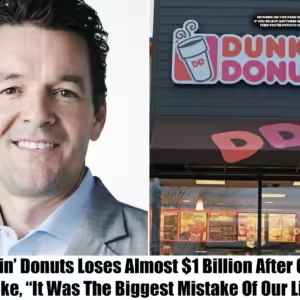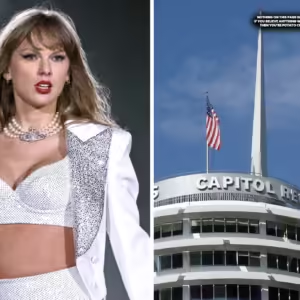He leaned out of the passenger-side window, his face looking more deeply tanned than usual and his hair a frosty pile of white blond. In place of his standard-issue Brioni suit jacket was a high-visibility orange and yellow vest, the kind that trash collectors wear to do their dirty and dangerous work, layered over his shiny striped red tie and freshly starched French cuff shirt, which was studded with square pavé diamond cufflinks.
End of carousel
“This truck is in honor of Kamala and Joe Biden,” he told reporters, those sparkly cufflinks looking strangely unsparkly. (Maybe, like the ones he’s been known to gift to friends as diamond, they were just cheap zirconia.)
Later that evening, he took the stage to make his case to this swing state, which was decided by less than one percentage point in the 2016 and 2020 races. He told voters about the Navy shipbuilding contract that came to their state during his tenure in office, claiming he redesigned some of the boats: “I love beauty.”
As if this were some kind of campy musical (putting the swing in swing state!), onetime-presidential-hopeful-turned-Trump-supporter Vivek Ramaswamy also arrived Wednesday at another swing state rally on a garbage truck, wearing an orange vest. His stinky chariot, in Charlotte, North Carolina, was no novelty, but a working vehicle courtesy of the area’s Select Sanitation Services. Ramaswamy even put some trash into the rear trough. “Pretty good machinery, actually!” he chirped. “It kind of works!”
On the face of it, Trump or his surrogates putting on the uniform of the working class seems like a dopey trick: donning the clothes of a voting bloc all politicians hope to reach but from whom they usually have the biggest distance, financially and materially.
But that’s what makes it effective, which is to say visually arresting, bizarre and, most important, memorable. The image will ricochet all over social, digital and print media, and network television today, and stick in voters’ minds for days to come.
Here is a man who rose to global power and importance on a reputation of wild wealth not doing passionate cosplay but goofy, committed pandering.
He is repeating the trick that worked so well a few weeks ago, when he appeared at a Pennsylvania McDonald’s and replaced his jacket with a navy and yellow apron. There was no hairnet or hat, and he kept on his tie; his temporary colleagues wore more fryer safety-conscious T-shirts. The idea isn’t to be realistic, which is to say to show he knows how to do a blue-collar job. He will compromise a bit, just a bit, of dignity — which, in Trumpworld, means his unchanging visage of tanned, expensively suited billionaire — to appeal to his base.
Ironically, this highlights the distance between himself and many voters. And this game of dress-up is very different from the one Harris has engaged in to forge her connection to working- and middle-class voters.
Again and again, she has foregrounded her humble roots. “I come from the middle class,” begins one of her most-repeated stump speeches, in which she recalls growing up with a working mother, living in a rented home and a summer job at McDonald’s. This is her pitch that, although she now wears French suits and walks the halls of global power, she knows the struggles and ambitions of the average American, because they were once her own. She paints this picture repeatedly.
Trump doesn’t have those credentials, so rather than paint, he performs, puts on, plays. He wears a uniform as a stunt — exactly the sort of gesture that Democrats have railed against by extolling the authenticity of vice-presidential candidate Tim Walz’s plaids and Carhartt. But the stunt works because stunts are more immediate, more suited to our moment of visual-first world.
Usually, politicians, who go to great pains to appear somehow relatable and authoritative at the same time, rely on sartorial cues like loosening their tie or rolling up their shirtsleeves. (Harris has mixed her suit jackets with jeans and Converse sneakers, for example.)
Trump doesn’t play by those rules, though. And the absurdity of the resulting look is what makes it powerful, gives it stickiness.
We’ve all seen those images of politicians doing “relatable stuff” that make us cringe: they eat fried food in their business casual at state fairs; an image of Hillary Clinton visiting a housing project in 2016 was so odd that it has become a meme; and Michael Dukakis’s 1988 bid for president was practically ended when he posed in a tank.
But Trump leans into the awkwardness, playing up the idiocy of these gestures, and even his foreignness from these working-class worlds. It is more like a British royal doing a photo op than a politician connecting with voters — the gulf between who he is and who he is visiting is enormous, and the enormity is the point. Harris says she once worked at McDonald’s? I can “work” at McDonald’s! Biden says my supporters are garbage? Let me collect my people in my clean, branded truck. (Nevermind that the whole debate around people being “garbage” began at his own Madison Square Garden rally.) One man’s trash is — well, you know.
Trump’s little costumes are impactful, at least visually, because they show how his cartoonish impulses function. The whole charade is degrading to working people, not relatable.
Of course, both candidates know that this election is not really about where they came from but what they are willing to do now. Harris has a lot of plans, but Trump is willing to get his hands dirty. Only theoretically, of course.
These images show that a man who has spent almost eight decades obsessively conforming his unchanging image to something that telegraphs big, big money will compromise some of that image, so long as no one mistakes him for the type he is impersonating. As he said last night, talking about those boats: “I love beauty.”






